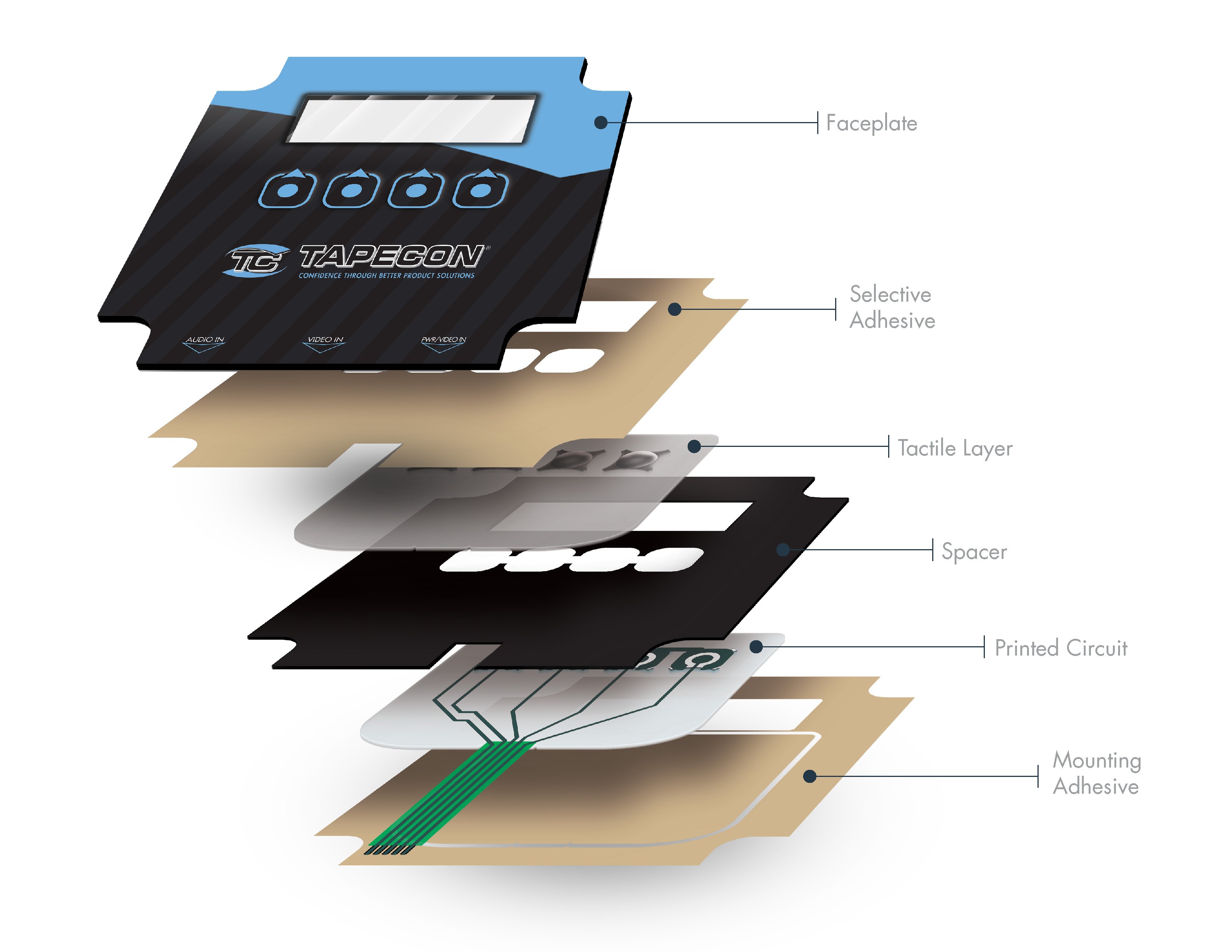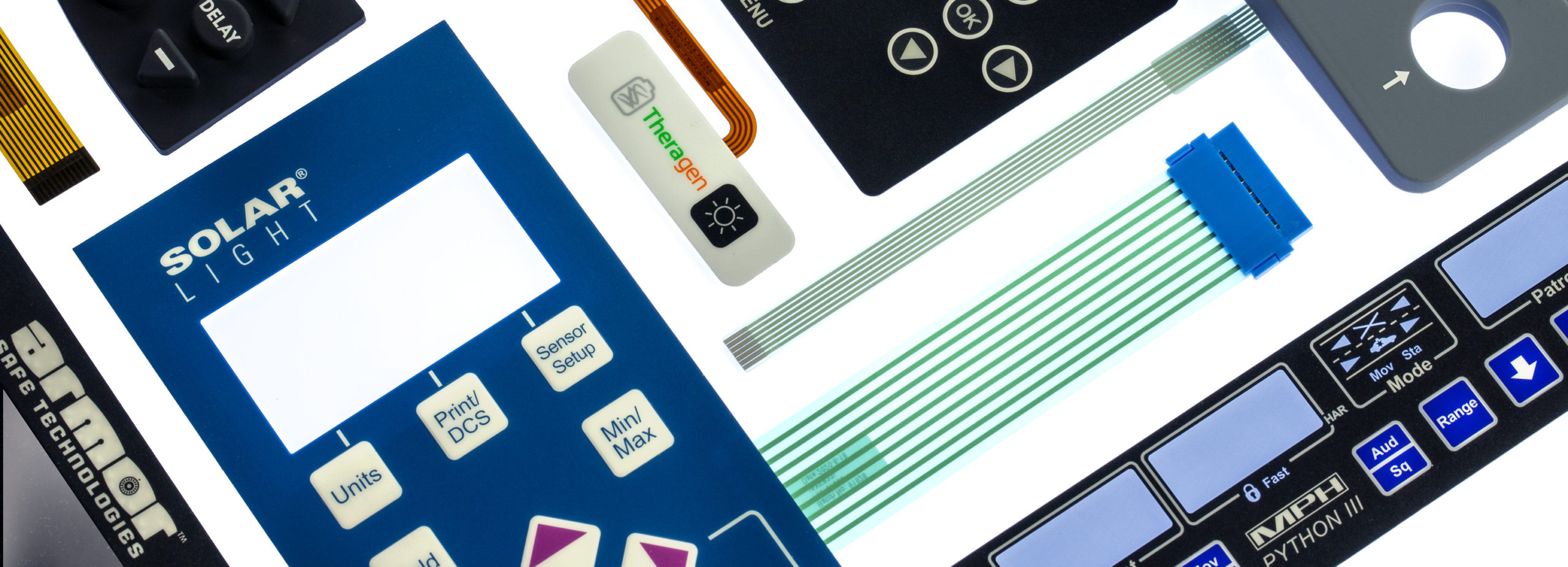The Role of Membrane Switches in Enhancing Product Durability and Efficiency
The Role of Membrane Switches in Enhancing Product Durability and Efficiency
Blog Article
Membrane Layer Change Innovation: The Key to Dependable and Cost-efficient Interfaces
Membrane switch innovation has emerged as a critical component in the style of individual interfaces, giving both integrity and cost-effectiveness throughout a varied variety of applications. As we check out the diverse advantages of membrane buttons, their capacity for technology raises inquiries regarding future applications and evolving trends.
Comprehending Membrane Change Innovation
Membrane layer switch modern technology is a commonly used user interface solution in numerous digital devices, providing a seamless blend of capability and style. This technology includes multiple layers of products, usually being composed of a visuals overlay, spacer layer, and a circuit layer. The graphic overlay presents the user interface elements, while the spacer layer divides the circuit layer from the overlay till an individual turns on a button.
When pressure is related to the overlay, the circuit layer completes the electrical circuit, sending a signal to the gadget. This mechanism permits various setups, consisting of responsive feedback and backlighting choices, enhancing user interaction. Membrane layer buttons are typically manufactured using sturdy materials such as polyester or polycarbonate, ensuring longevity and resistance to ecological elements like dampness and dirt.
The versatility of membrane layer switches enables their application in diverse sectors, consisting of clinical tools, customer electronics, and industrial controls. Their portable style enables integration into space-constrained environments, giving an effective interface without endangering visual appeal. Comprehending the intricacies of membrane layer switch modern technology is vital for manufacturers and developers looking for to produce dependable and efficient human-machine interfaces.
Key Benefits of Membrane Layer Switches
While different interface services exist, membrane layer switches deal distinctive advantages that make them a preferred choice in various applications. Among the primary benefits is their toughness; membrane layer buttons are developed to stand up to severe ecological problems, consisting of moisture, dust, and temperature variations, guaranteeing long-lasting performance. This durability dramatically minimizes the demand for frequent replacements, thereby decreasing general maintenance expenses.

Moreover, membrane layer buttons are light-weight and compact, making them appropriate for applications where space is limited. Their low-profile layout adds to a sleek appearance without endangering performance.
Cost-effectiveness is additionally a significant benefit, as the production process for membrane changes often tends to be much less costly compared to typical mechanical buttons. This price, incorporated with their integrity and simplicity of installation, placements membrane switches over as a useful option for a variety of industries looking for effective and reliable individual interfaces.
Applications Across Numerous Industries
How do membrane layer switches adjust to the varied demands of numerous industries? Membrane layer button innovation is significantly recognized for its adaptability, making it suitable for a large range of applications across numerous markets. In the clinical area, membrane buttons are used in diagnostic devices and individual surveillance gadgets, where their resilience and simplicity of cleaning are important for preserving hygiene requirements. The automobile market utilizes these switches in dashboards and control panels, using a streamlined visual while making sure easy to use procedure.
In customer electronic devices, membrane layer switches provide a portable service for remote controls and home devices, boosting individual experience through intuitive style. In addition, the commercial industry leverages membrane switches for machinery control panels, profiting from their resistance to rough atmospheres, such as wetness and dirt.
Armed forces and aerospace applications likewise use membrane layer buttons for their dependability and capability to stand up to severe problems, making sure functional efficiency in critical scenarios. Moreover, the food and drink sector takes on these buttons for automated systems, where cleanliness and ease of procedure are vital. Ultimately, membrane layer buttons are tailored to fulfill the distinct needs of each market, proving their crucial duty in modern innovation user interfaces
Style and Modification Alternatives

In the realm of additional resources membrane button innovation, style and customization options play a critical function in enhancing functionality and user communication. These switches can be tailored to satisfy certain operational needs and aesthetic preferences, making them flexible elements in various applications.
One of the main customization choices is the layout of the switch itself, which can be designed to fit distinct individual interfaces and ergonomic considerations. By changing the shape, size, and plan of buttons, manufacturers can develop user-friendly styles that help with ease of use. Additionally, the consolidation of different colors and graphic overlays enables for branding and enhanced visibility, guaranteeing that users can swiftly determine functions.
Additionally, membrane buttons can be engineered with different responsive comments mechanisms, such as raised switches or audible clicks, to enhance the individual experience. Various products can also be picked for toughness and environmental resistance, dealing with aspects such as dampness, temperature level fluctuations, and chemical exposure.
Inevitably, the considerable style and personalization alternatives available in membrane button modern technology equip services to produce tailored solutions that not just fulfill useful needs however also line up with their branding and functional demands.

Future Trends in Membrane Switches
As membrane layer switch modern technology continues to develop, future trends are progressively concentrated on boosting customer experience and incorporating sophisticated capabilities. One significant fad is the assimilation of touch-sensitive and capacitive technologies into typical membrane layer buttons. This development enables for even more intuitive interface, giving tactile responses while keeping a sleek design.
An additional emerging pattern is the use of eco-friendly materials, driven by the expanding demand for sustainable manufacturing techniques. Suppliers are looking for to decrease their carbon impact by utilizing recyclable substrates and low-impact inks, straightening with global sustainability goals.
Additionally, the increase of the Net of Points (IoT) is triggering the unification of smart functions right into membrane switches. Enhanced connectivity options will allow devices to interact with each other, enabling seamless combination click here now into more comprehensive systems.
Furthermore, innovations in printing innovations, such as digital printing, are permitting for higher design versatility and modification. This enables makers to create intricate layouts and vibrant colors cost-effectively.

Conclusion
In final thought, membrane button modern technology represents a vital innovation in individual interface style, using considerable benefits in sturdiness, customization, and cost-effectiveness. As advancements proceed to arise, specifically in touch-sensitive user interfaces and sustainable materials, the possibility for membrane layer directory switches over to enhance user experience and performance stays promising.
Report this page